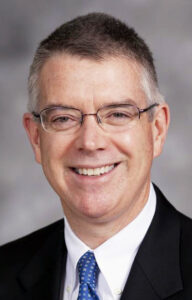By Dr. Tim Millea
We are all familiar with the adage, “Time flies when you’re having fun.” In stark contrast to that cheery note, we can focus on one word: coronavirus. The dramatic impact on our lives and our society began nearly three months ago, but to most of us, it seems much, much longer than that. Although it seems that we are emerging slowly from the various restrictions imposed, we clearly have a long way to go to what our “new normal” may be. From medical, scientific and cultural perspectives, a remarkable amount of information has been gathered, lessons have been learned and anxieties are gradually easing. However, the category of “what we do know” is still significantly smaller than the “what we don’t know” category.

Throughout the COVID crisis, the information available to the public has often been vague at best and, unfortunately, dangerous at worst. Following the initial outbreak in Wuhan and the regional epidemic, the declaration of a pandemic followed. As the virus traveled internationally, the “COVID Infodemic” developed. The rapid and widespread dissemination of information worldwide led to public awareness of advice that was often not accurate. People were sheltering at home, which allowed more time to gather news and commentary, especially online, with unreliable means to verify the accuracy of the information. As described by a data scientist in hard-hit Venice, Italy, it was a “perfect storm for the diffusion of false rumour and fake news.”
At the outset of the pandemic in the United States, the call to arms from the public health leaders was the need to “flatten the curve.” The same admonition would apply to the “infodemic” of misleading information. Similar to concerns about the virus, the goal was not to stop the spread of bad advice, but rather to try to control it. Many websites proposed a wide variety of conspiratorial explanations, such as “Chinese spies stole the virus from a Canadian lab,” and, “the virus is a manmade bioweapon.” Miracle cures were touted by “medical experts,” including garlic, Vitamin C, colloidal silver, and lemon juice mixed with hot water. Fortunately, most of this erroneous advice could be debunked and discarded.
Some factors learned from our coronavirus journey are valuable, both now and for the future. The Centers for Disease Control and Prevention report, with growing confidence, that more than 90% of infections are due to aerosolized virus and contaminated hands, with a very small number due to contact with contaminated surfaces. Ample evidence supports masks worn in public, social distancing, thorough hand washing and avoidance of large gatherings, especially during the early and mid-pandemic stages. The most important lessons to be learned will be retrospective, as we emerge from the pandemic and have time to digest the information gathered at the local, state, national and international levels.
As Catholics, we need to be aware of misinformation that contradicts the principles and values of our faith. Because of the COVID experience, we have become familiar with the term “essential services.” Although various government agencies determine the definition, the general meaning is self-evident. In most outlines of these services, the first category listed is “healthcare.” The Department of Homeland Security lists 18 categories of healthcare workers deemed “essential,” ranging from physicians and nurses to addiction counselors and morticians. Glaringly absent from the “essential” list are abortion providers such as Planned Parenthood. Not surprisingly, in states that have not deemed abortion to be an essential service, Planned Parenthood has pursued legal action to allow the agency to continue devastating procedures that are a billion-dollar annual business for them. It is contradictory for the pro-abortion community that has long stressed the importance of “choice” to maintain that abortion is “essential.”
As we look forward to the hopeful development of vaccines for protection from coronavirus, it is important to understand how vaccines are developed. Biotechnology companies have many means to utilize; unfortunately, several include the use of cells of aborted babies to produce the vaccine. Clearly, the use of these cells is unethical, and the end does not justify the means. The effectiveness of these vaccines is increasingly questioned, as is their safety. In contrast, the use of adult-derived stem cells for vaccine development is morally correct, as well as safer, effective and much less costly. It is important and appropriate to ask our healthcare providers about the source of their vaccines as well as the means of their development. Within our Diocese of Davenport, ethical vaccine development is already underway at the John Paul II Medical Research Institute in Coralville. Centers such as this deserve our attention and support, as they adhere to the principles and values of our Catholic faith in their scientific pursuits.
As the pandemic concerns ease, we have the opportunity to strengthen our faith and display it to those around us. Our Catholic faith is indeed our primary “essential service” during our earthly life, and support for medical services that promote the dignity of life is critically important for all of us. That is undoubtedly in the “what we do know” category.
(Dr. Millea is a physician, president of the St. Thomas Aquinas Guild of the Quad Cities and member of St. Paul the Apostle Parish, Davenport.)











